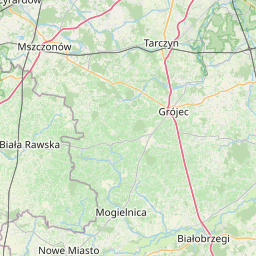Grójec - Poland
Nestled in the eastern reaches of Poland within the Masovian Voivodeship lies Grójec—a charming town that serves as a beacon of urban planning and agricultural prowess. With a population of 16,674 inhabitants as of 2017, Grójec stands out not only for its vibrant community life but also for being the administrative hub of both the urban-rural district and Grójec County. This idyllic locale is best known for cultivating one-third of Poland’s apple harvests due to its unique local microclimate that gifts the fruit with a distinctively beautiful red hue, earning it recognition as Europe's largest apple orchard.
Strengths:
Grójec boasts an array of strengths that contribute positively to its quality of life index. Its amenities score, rated at B, reflects well on the town’s infrastructure and access to essential services, making everyday living both comfortable and convenient for residents. The childcare and education score of B highlights Grójec's commitment to nurturing young minds through robust educational facilities and programs, ensuring a strong foundation for future generations.
Cultural vibrancy in Grójec is steadily growing, evidenced by its culture and entertainment score of C+. This reflects an expanding scene with local festivals, community events, and arts initiatives that foster a sense of belonging and cultural richness. Additionally, the town's sustainable urban development efforts are paving the way for improved urban livability analysis outcomes.
Challenges:
Despite these strengths, Grójec faces challenges typical of many developing areas. Its commute score of C+ suggests room for improvement in local transport services—a critical aspect of sustainable urban planning that affects daily routines and overall satisfaction. Efforts to enhance public transit systems, such as the introduction of more efficient tram stops or an expanded network of bus routes, are ongoing.
The NIMBY (Not In My Back Yard) score of C- and noise score of C highlight some community resistance to new developments and concerns about sound pollution, respectively. These challenges present opportunities for innovative land zoning strategies and urban redevelopment projects aimed at harmonizing growth with existing communities' preferences and lifestyles.
Analysis and Context:
Grójec's overall quality of life is influenced by various factors that are reflected in its total score of B-. The town’s access to healthcare plays a crucial role, with a health score of B- indicating adequate medical facilities but also room for enhancements. Sustainable urban development initiatives continue to focus on balancing growth with maintaining the well-being and health-related quality of life for residents.
In terms of transportation and accessibility, while Grójec is currently working toward improving its public transit services, the emphasis on sustainable urban planning remains a pivotal component in enhancing commute experiences. Investments in better transport passes and local infrastructure are essential to climbing higher in the city livability ranking.
Conclusion:
Grójec encapsulates both the charm of rural Poland and the dynamic potential of an emerging town committed to growth and sustainability. Its strengths in education, healthcare access, and cultural development position it as a noteworthy contender for improvement in urban livability analysis metrics. While challenges such as commute efficiency and noise management persist, Grójec's trajectory suggests a promising future with opportunities to further enhance its living quality index. As the town continues its journey toward sustainable urban redevelopment, it holds significant potential to ascend the global livability rankings, providing an even better life for all its residents.

Historical architecture in the town centre
Grójec

Country: Poland
Population: 17037
Elevation: 153.0 metre
Area: 8.52 square kilometre
Web: http://www.grojecmiasto.pl/
Mayor: Dariusz Gwiazda
Postal code: 05-600
Area code: +48 48






Leaflet © OpenStreetMap contributors & Scrape4U
Overall score
Total
ScoreB-
AmenitiesScoreB
Childcare & EducationScoreB
CommuteScoreC+
Culture & EntertainmentScoreC+
HealthScoreB-
NIMBYScoreC-
NoiseScoreC
-3.84
Score scale
2.67





Leaflet © OpenStreetMap contributors & Scrape4U
The Street Score represents the overall quality of a street or location based on several factors, providing a comprehensive evaluation of its livability.
Here's how it is calculated:
Positive Contributions:
Positive Contributions:
- Amenities Score: Measures access to shops, restaurants, banks, and other daily services.
- Commute Score: Reflects the availability of transportation options such as bus stops, train stations, and petrol stations.
- Health Score: Evaluates access to healthcare facilities like clinics, pharmacies, gyms, and sports venues.
- Culture & Entertainment Score: Assesses the presence of cultural venues such as cinemas, libraries, museums, and community centers.
- Childcare & Education Score: Accounts for access to childcare centers, schools, and educational institutions.
Negative Contributions:
- Noise Score (-0.05 factor): Reduces the overall score if the area is affected by high noise levels, such as from traffic or industrial sources.
- NIMBY Score (-0.1 factor): Deduces points based on proximity to undesirable facilities like landfills or industrial plants, which could negatively impact the area.
The sum of these factors provides an overall score, helping users understand the balance between convenience, livability, and potential downsides like noise or undesirable developments.